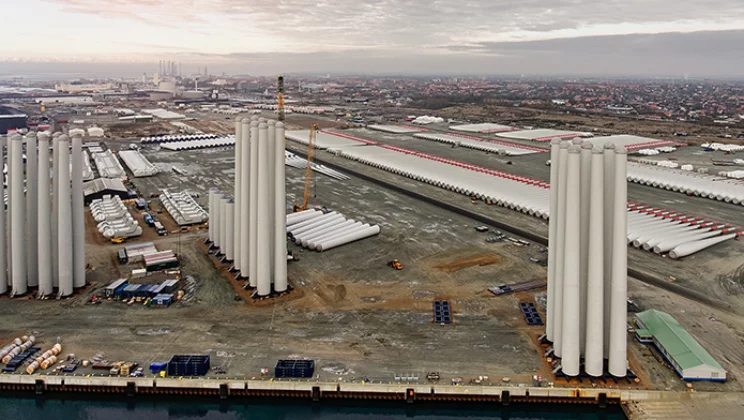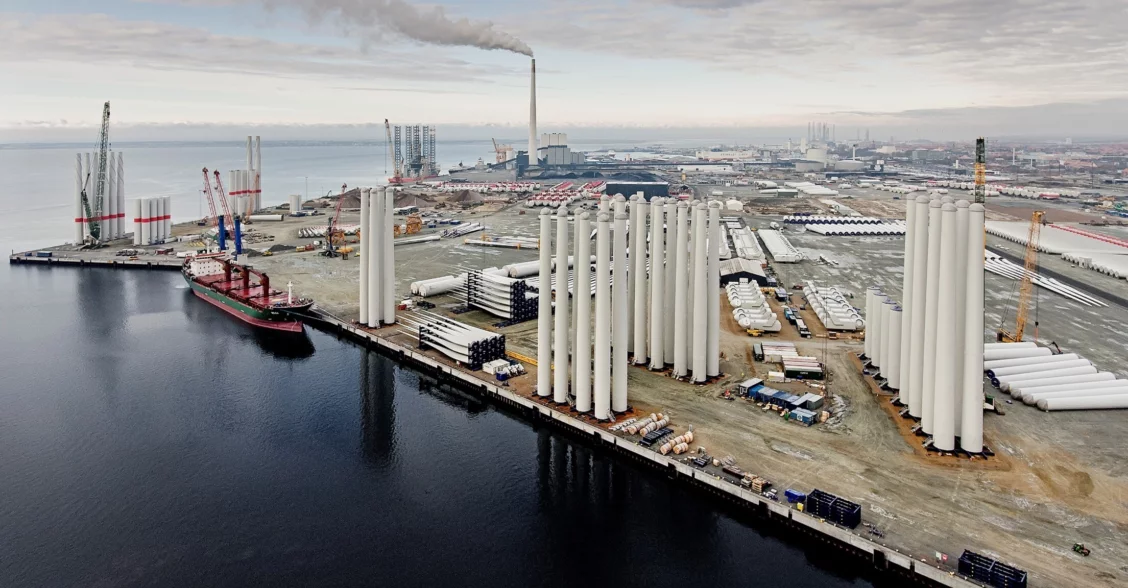Although the global market for wind energy is growing, there is no room for complacency if Denmark is to maintain its position as an international centre for offshore wind, according to CEO of MHI Vestas Jens Tommerup. He points to the Port of Esbjerg as a strong skills cluster that will most likely continue to play a key role in the wind industry.
For years, Denmark has been considered an international offshore wind hub. In 2015, Danish companies had a market share of about one third of the global grid-connected capacity, excluding China.
And when it comes to offshore wind, Denmark is well out in front. All offshore wind turbines installed in European waters in 2016 were manufactured by Danish suppliers, and of the 1,567 MW connected to the European grid, 1,100 MW were shipped out of Esbjerg.
However, there is no guarantee that Denmark can maintain its leading position.
“We’ve done really well so far, but complacency is something we cannot afford. Without innovation, we won’t be able to retain our position as a centre for offshore wind,” says Mr Tommerup.
He describes a development in which the offshore wind industry makes the decisive move from being a local or regional industry to becoming global. That implies offshore wind increasingly penetrating new markets outside Europe and Danish companies constantly competing with foreign peers, also from neighbouring countries such as Belgium, the Netherlands, the UK and Germany.
“From a Danish perspective, we have a very strong position, but we have to consistently work to defend it because we are being challenged every single day,” says Mr Tommerup.

Having a local market is crucial
According to Mr Tommerup, having a local market is crucial for the Danish offshore wind industry because it is the only way the country can retain its special skills and well-trained work force, which, for example, was crucial in MHI Vestas’ decision, when the Danish-Japanese joint venture was established three years ago, to site its head office in Aarhus and factories in Nakskov and Odense.
Another vital factor is having access to test facilities and a proximity to universities that can help provide the innovation that is so essential to the success of the Danish wind industry.
Mr Tommerup emphasises the importance of having close cooperation between the industry and the politicians that lay down the framework conditions.
“We all have a responsibility, which is why it is essential that everyone in the offshore wind value chain works together with the public institutions and the government. We must ensure that we have a local market as well as a regional market that we can serve from Denmark.”
Evolving into a global industry
The offshore wind industry is going global, and that is one reason why Denmark is increasingly being challenged on its dominant position in offshore wind.
A new report from the GWEC, the Global Wind Energy Council, describes how the market for wind energy continued to grow in 2016 and now encompasses more than 90 countries.
The GWEC predicts that global wind capacity will almost double over the next four years, from currently almost 500 MW to more than 800 MW by 2021, in part due to the expansion of offshore wind.
A closer look at Europe reveals a similar boom. At industry organisation WindEurope, they expect about 25 GW grid-connected offshore wind by 2020. That is also nearly twice as much as the current capacity of 12.6 GW.
Mr Tommerup agrees that offshore wind will play a larger and more important role in the energy supply of the future. That development will be driven by the cost reductions that have been drawing headlines during the past year. At the Dutch offshore wind farms Borssele 3 and 4, the cost was just DKK 41 øre per kWh, while Kriegers Flak broke the DKK 40 øre barrier at a cost as low as DKK 37 øre per kWh.
“Obviously, we’re very pleased with the reduction in the cost of offshore wind, because it means we're close to being able to compete with other sources of energy. That will spark additional investments along the entire value chain,” says Mr Tommerup.
Need for clear goals
In order to keep the positive momentum, it is important that the industry can identify a stable pipeline of projects well into the future. In fact, a high level of activity is clearly indicated for the foreseeable future.
“We’re seeing promising developments in countries like Japan, Taiwan and the United States, and we have strong hopes for these markets,” explains Mr Tommerup:
“But we will also need the support of local governments; we need clear legislation and clear goals. With that as our scope and framework, we’ll see investments in the industry along the entire value chain, including in local ports, local vessels and a lot of local infrastructure.”

Esbjerg retaining its key position
Denmark has also been challenged by the global expansion of the offshore wind industry, but its many years of experience in offshore wind also translates into competitive advantages.
Mr Tommerup notes that the Port of Esbjerg is positioned as one of northern Europe’s most important offshore wind hubs, because the decision to focus on the offshore wind industry at an early stage helped the PoE build skills, define best practises and create a very strong supply chain.
“Because the PoE is so well and efficiently run, it is financially attractive to use it as a base for shipping components to offshore wind farms over long distances, maybe even further away than the UK, Germany, Belgium or the Netherlands.”
This is one reason why Mr Tommerup sees the Port of Esbjerg as an important player in the future. MHI Vestas is currently expanding at Esbjerg, adding warehouse facilities and wind turbine component pre-assembly facilities, and the company currently has seven offshore wind projects that will be shipped from the PoE. Mr Tommerup also notes that from an efficiency perspective it would make sense to bring more activities to Esbjerg, although he currently has no specific plans on the drawing board.
With considerations like that, Esbjerg – and Denmark – could well stand a good chance of retaining its position as one of the international offshore wind hubs. This is an industry that, according to Mr Tommerup, just keeps growing:
“We have shown that we are able to cut costs, and we’re now working to demonstrate that we have a reliable business model. That is something we must do consistently and repeatedly in order to persuade governments and other stakeholders that offshore wind should make up an even greater part of the energy supply.”
Go to overview

